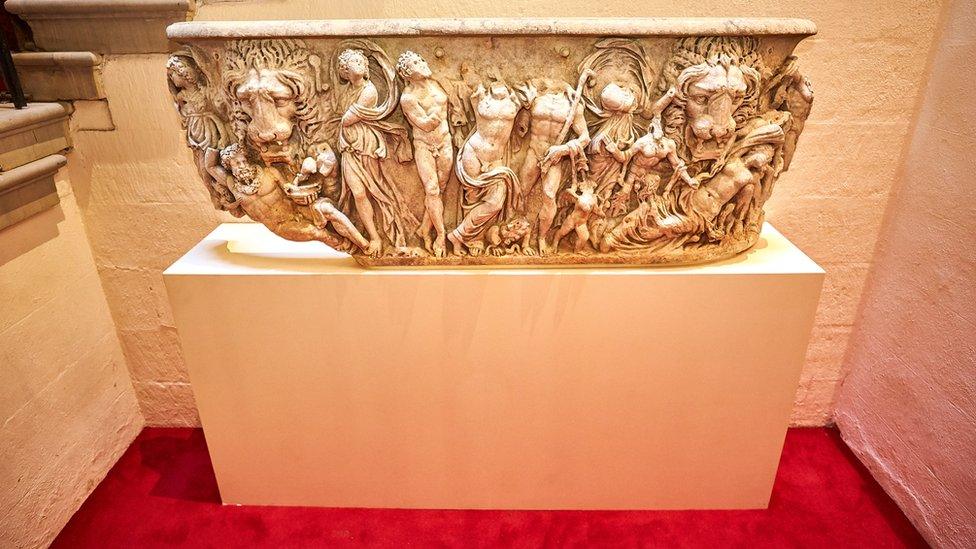Blenheim Palace flowerpot turns out to be Roman coffin
- Published

The coffin was brought to the grounds by the fifth Duke of Marlborough
A large marble container used as a flowerpot at Blenheim Palace for 200 years has turned out to be a 1,700-year-old Roman sarcophagus.
The coffin was brought to the grounds by the fifth Duke of Marlborough in the 19th Century where it was first used as a water feature.
Until recently it featured in the palace's rock garden displaying flowers but has since been put on display indoors to protect it.
It has been valued at £300,000.
It was noticed by an antiques expert who was visiting the palace on unrelated business. He identified it as the front of a white marble sarcophagus.
The 2m (6.6ft) long 400 kg coffin features carvings of a drunken Dionysus leaning on a satyr at a party, flanked by the likes of Hercules and Ariadne, and two large lion heads.

The sarcophagus is no longer used as a flowerpot, and is on display indoors
Following the revelation of its origin, it was removed from the garden and sent for restoration.
The project was overseen by Nicholas Banfield at Cliveden Conservation, who said it was in "remarkable condition considering it has withstood seemingly aggressive environments; particularly that of a fountain receptacle".
He added: "Following an initial in-situ inspection we were able to unbolt it from the lead cistern to which it was attached and take it back to our workshops for full cleaning, repair and stabilisation."
House manager Kate Ballenger said: "We are delighted to have it back and the restoration work undertaken by Nicholas is very impressive.
"Now it is in a consistent indoor climate away from the natural elements we are hoping it will remain in good condition and survive for many more centuries to come."
The palace said it had no records to indicate whether the coffin was purchased by the duke, or gifted to him, nor where it came from.
The fifth duke was former Prime Minister Sir Winston Churchill's great-great-grandfather.
A member of parliament, first as a Whig and later a Tory, the duke lived out his final years at Blenheim amid mounting debt.